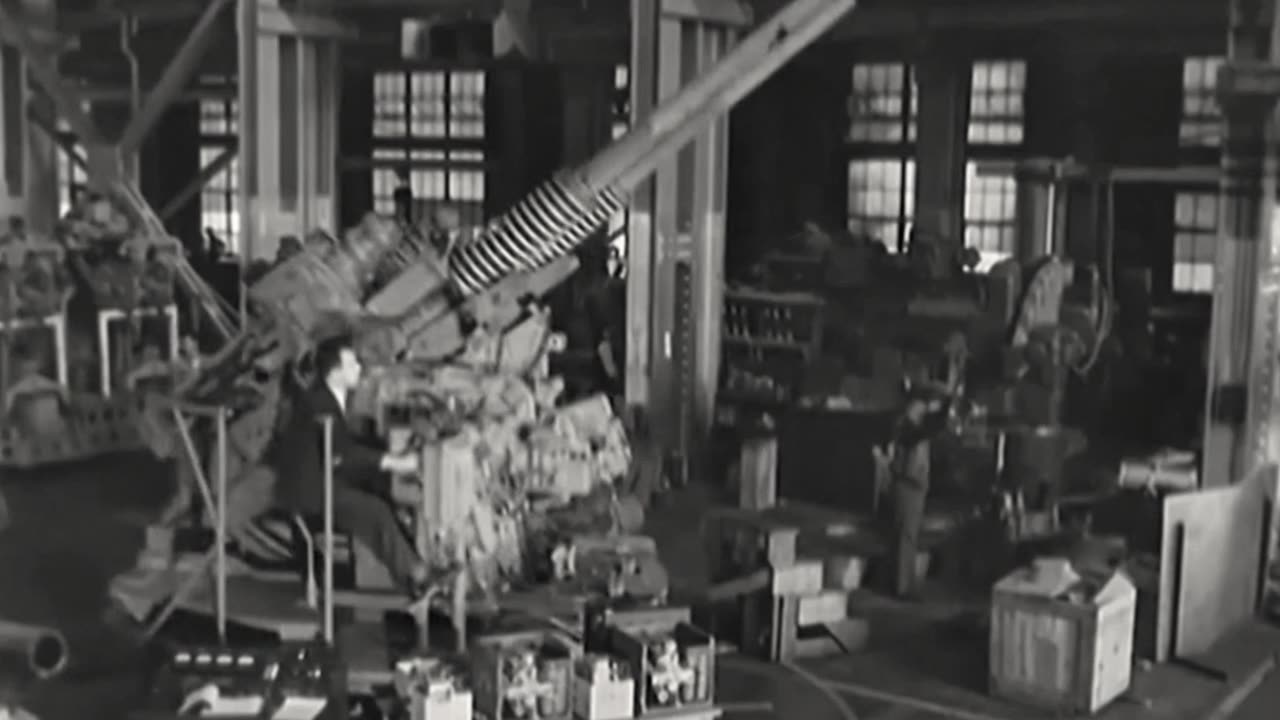Premium Only Content

Testing of single and twin mounted 3"/50 caliber Mark 22 AA guns in 1951
In 1944-1945, the USN found that their 20 mm Oerlikons and 40 mm Bofors batteries were ineffective in stopping Japanese Kamikaze attacks. Only the 5"/38 (12.7 cm) fired a round large enough to kill-stop a determined attacker and this weapon was too heavy to use in the numbers necessary. This problem led to an accelerated program to develop an intermediate-caliber weapon that could fire a VT fuzed shell.
The weapon chosen was the standard 3"/50 (7.62 cm) Mark 22 which was used on many Destroyer Escorts and auxiliaries built during the latter part of World War II. This was the smallest-caliber weapon which could still use the VT fuzes available at the time. It also had a concentric counter-recoil spring, which meant that it was more easily adapted for automatic fire. Automatic fire was achieved with an electrically driven auto-loader using revolving sprockets.
-
 2:30
2:30
hw97karbine
22 days agoArmy Ranger Combat Training School at Fort Shafter in Honolulu circa 1943
1641 -
 4:14
4:14
The Rubin Report
1 day agoDave Rubin Shares Behind-the-Scenes Story of What Charlie Kirk Did for Him
42.3K25 -
 1:58:58
1:58:58
Badlands Media
1 day agoDevolution Power Hour Ep. 389: Psyops, Patsies, and the Information War
88.8K93 -
 2:13:55
2:13:55
Tundra Tactical
7 hours ago $9.23 earnedTundra Talks New Guns and Remembers Charlie Kirk On The Worlds Okayest Gun Show Tundra Nation Live
33.4K4 -
 1:45:08
1:45:08
DDayCobra
8 hours ago $36.45 earnedDemocrats Caught LYING Again About Charlie Kirk's KILLER
68.4K80 -
 19:23
19:23
DeVory Darkins
10 hours ago $14.79 earnedShocking Update Released Regarding Shooter's Roommate as Democrats Issue Insane Response
46.2K154 -
 19:53
19:53
Stephen Gardner
12 hours ago🔥EXPOSED: Charlie Kirk Shooter's Trans Partner Tells FBI EVERYTHING!
63.3K322 -
 2:47:25
2:47:25
BlackDiamondGunsandGear
8 hours agoAfter Hours Armory / RIP Charlie Kirk / What we know
38.6K6 -
 29:09
29:09
Afshin Rattansi's Going Underground
1 day agoThe Political Life of Malcolm X: Busting the Myths (Prof. Kehinde Andrews)
49.9K13 -
 2:47:25
2:47:25
DLDAfterDark
8 hours ago $5.47 earnedThe Assassination of Charlie Kirk - Just What We KNOW
30.4K6